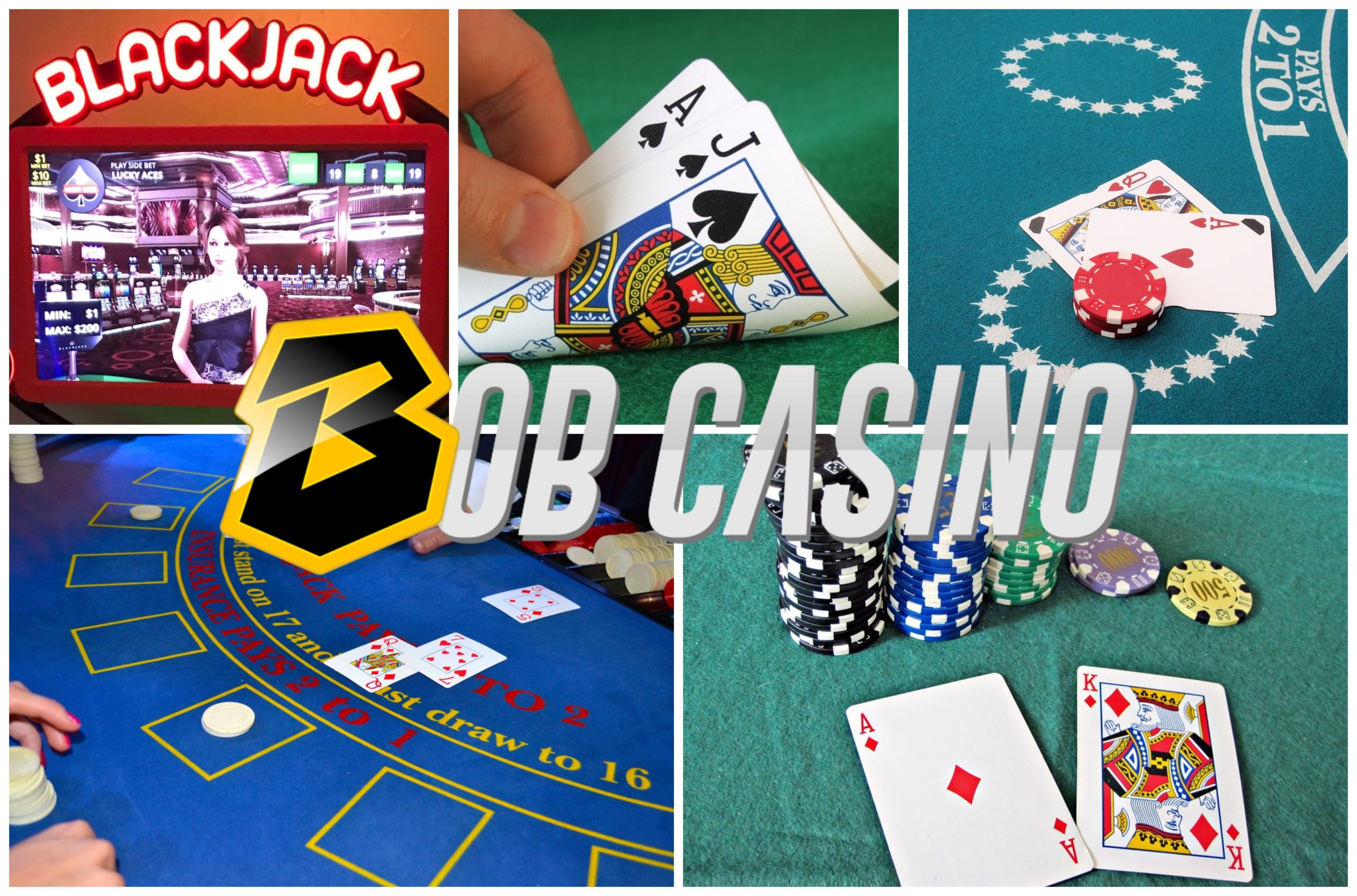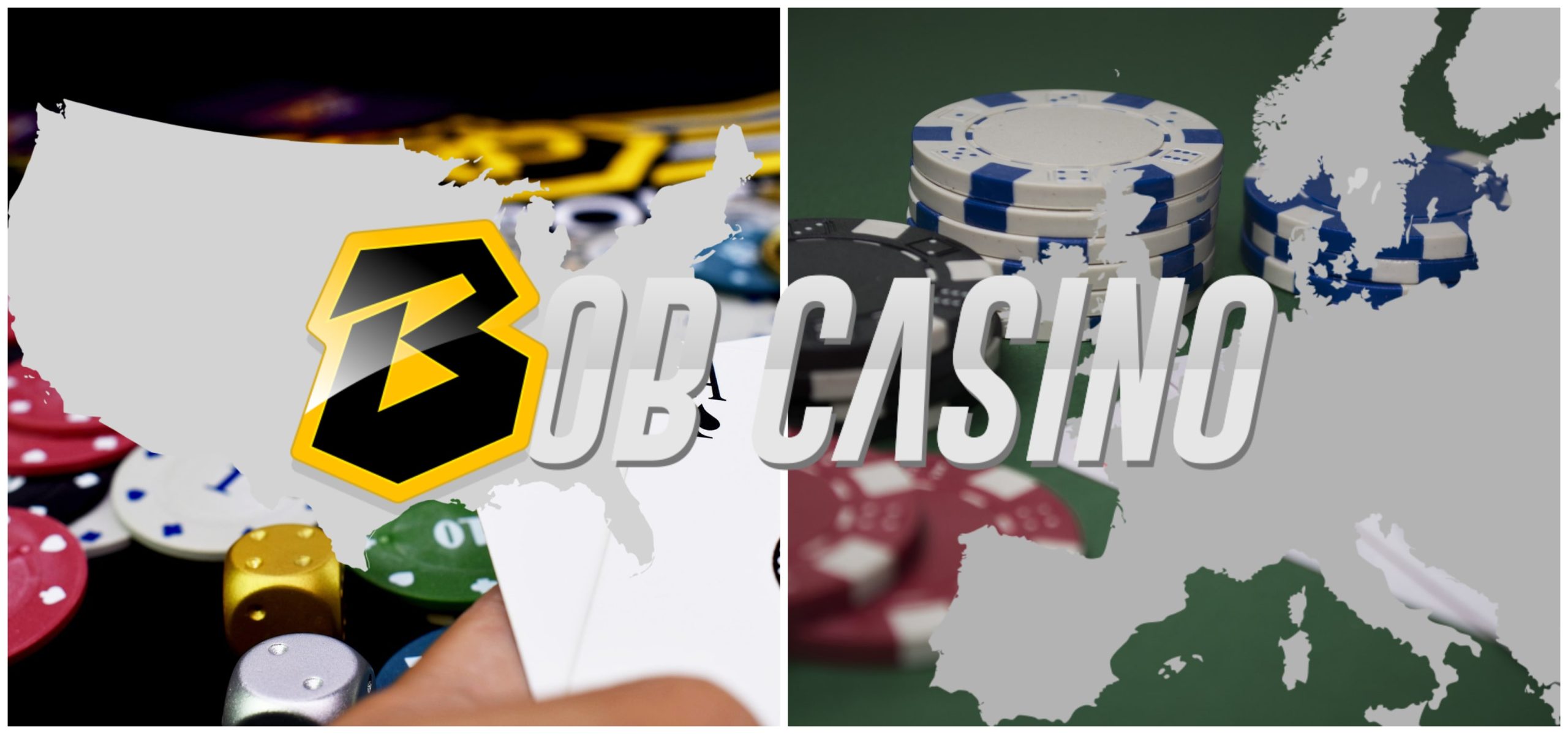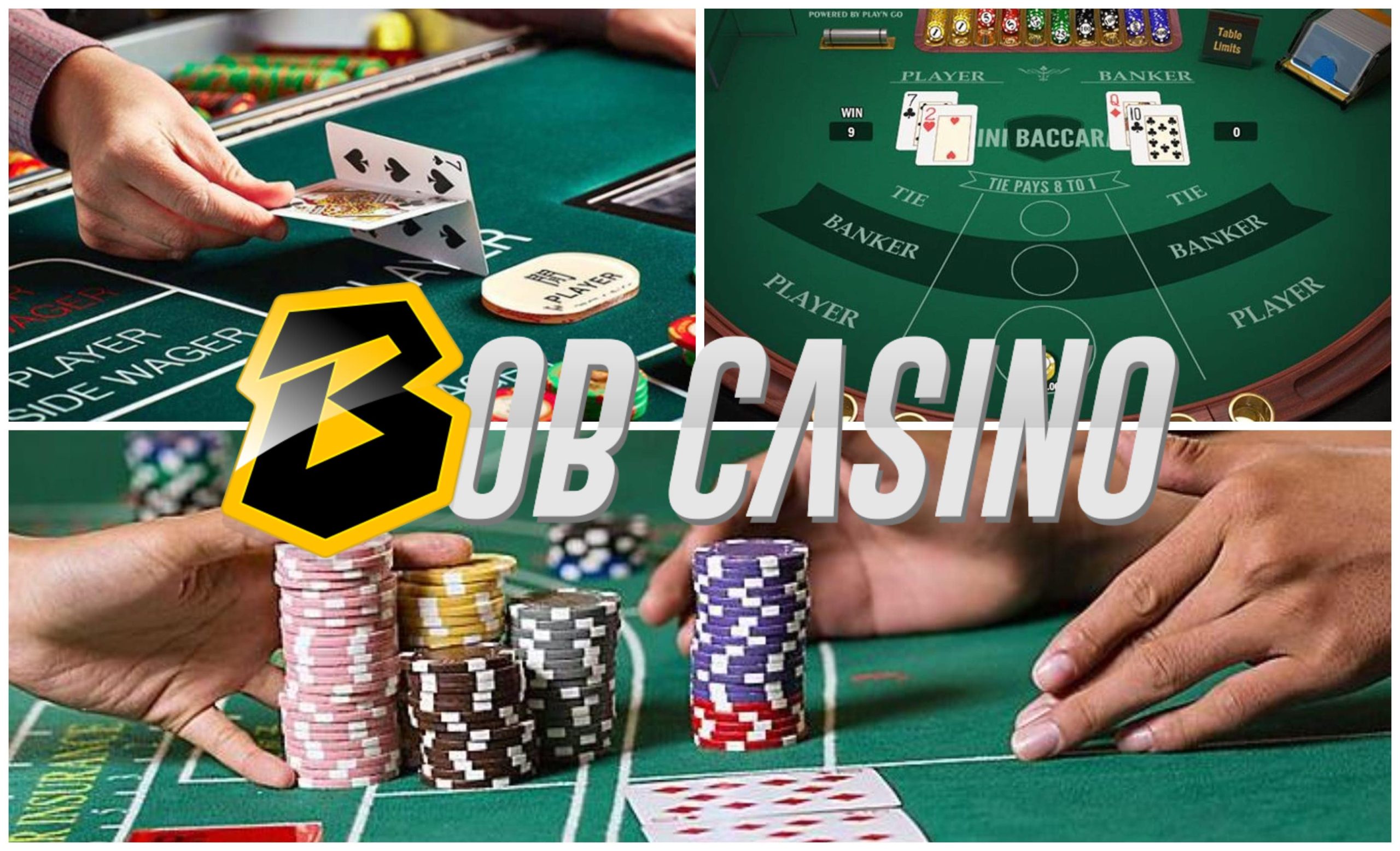 Published: 20.05.2019, 13:58
Published: 20.05.2019, 13:58 10 min read
10 min readAll across the board, Blackjack is surely the most popular gambling game, be it in an online casino or a land-based one. Its popularity can only be compared to the likes of Roulette or Poker. Our Blackjack rules should help you better understand how the game works.
Due to its simple goal, virtually everyone knows what it is: in some countries, it is even referred to as just 21, showcasing how fundamentally easy-to-follow it is.
That said, a novice casino player might get dizzy from the sheer number of options in what seemed to be such a simple premise for a card game: get the score of 21 or as close to it as possible and don’t go overboard.
The rules of such variations differ as well, while the success at any of those is largely attributed to the fact that luck will only get you so far. The more skilled the player is, the more chance there is for winning, a key factor in the game’s popularity.
Every alteration entails certain specifics to bear in mind, so we compiled both Blackjack rules and rules of Blackjack variations that you can stumble upon on Bob Casino, as well as most of the other online casinos.
General Blackjack Rules
Except for the difference of European version from American, most Blackjack games do not stray too far from the underlying principles:
Goal
Getting the score as close to 21 as possible, without getting over it, before the dealer does.
Dealing
The cards are given to each player, face-up, while the second dealer card is faced down.
Card Values
Ace is worth 1 or 11, up to the player. Face cards are the value of 10 and the rest of the cards equate to the face value.
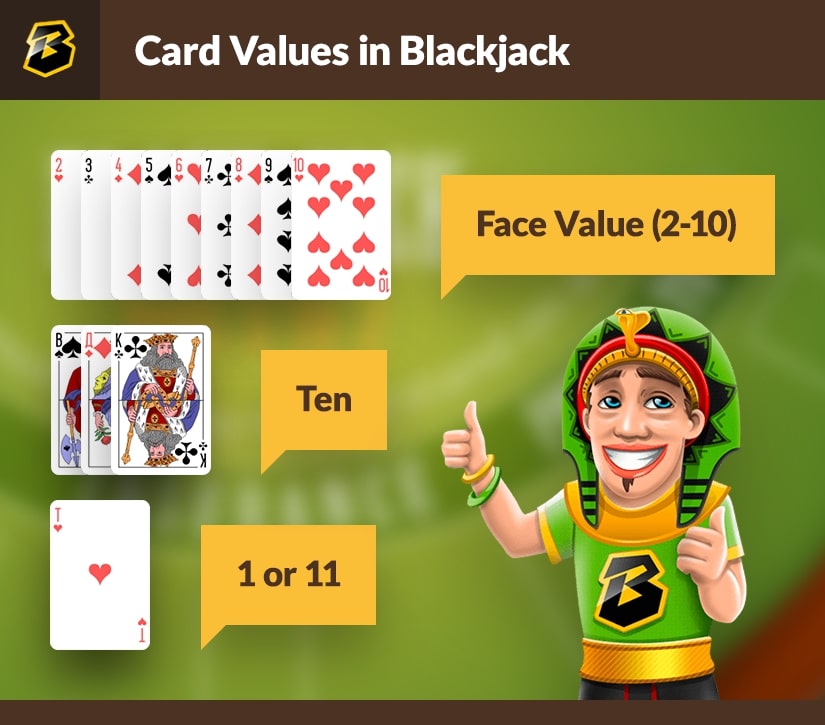
Blackjack card values.
The Game
A player can either Hit (take another card) or Stand during their turn. If the player gets a Natural, or Blackjack (immediate score of 21), they get 1.5x worth of their bet, but if both the dealer and any of the players get a Blackjack, it’s a push (tie) and the chips are given back.
Blackjack Dealer
The dealer can only peek at a down-faced card if the other card is a ten or an Ace. They should hit until their card value is 16 or under, while they should stand if the value is 17 or higher. They cannot split or double their hand.
Split
When getting two cards of the same denomination, a player can choose to split them and play as two hands, with an amount of original bet placed for the new hand.
If the pair is split from aces, a single card is given per hand and the player cannot draw again. If the player gets a Blackjack for one of the hands, they get a payoff equal to the bet.
Double
The player can double the original bet. The possibility of it depends on the specific game or the casino, but it is usually possible with the total first two-card value of 9,10 or 11 and on any of the two cards.
Insurance
The players can make another bet (insurance) whenever the dealer has an ace, in order to ensure a winning from the house if the dealer gets a ten. Winners get a double of the half bet, while it would be a push if the player themselves get a Blackjack.
Surrender
The player can sacrifice half of the original bet (surrender) if they think that the hand is unlucky. Some variations allow late surrender, which can be done after the dealer looks at their second face-down card.
Settlement
The bet is lost when the player goes bust, even if the dealer goes bust as well. The dealer collects the pay from all the players that have a lower total card value than him and pays the winner or the players that stand at a higher total value than him. Nothing is paid or collected after a push.
It’s important to note that the player only plays against the dealer and not other players, so the score of the cards at hand will be compared only to the dealer’s hand and not the other players.
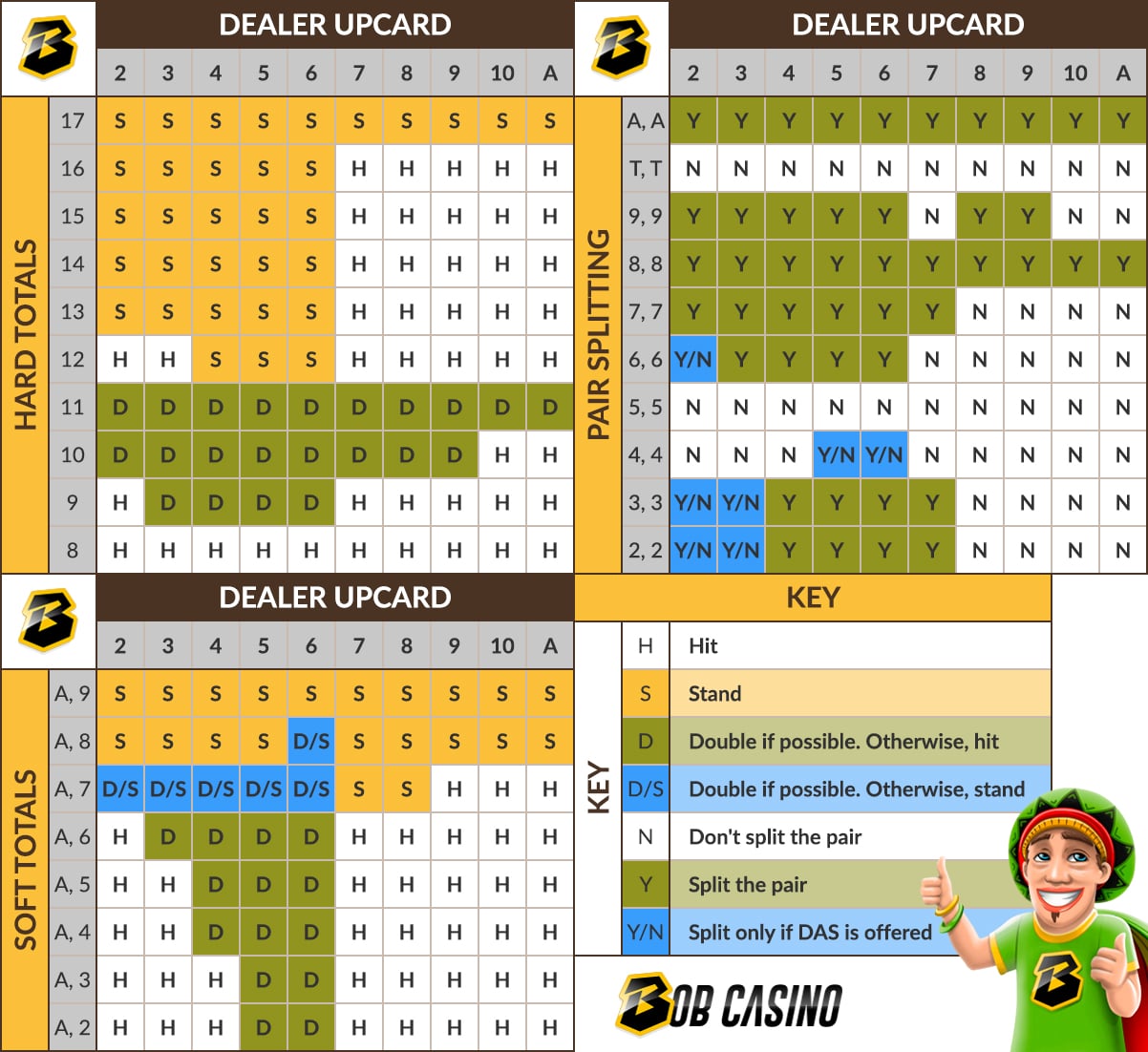
A cheat sheet on where to hit, stand or split during the game of blackjack.
Single Deck Blackjack Rules
Now that the basic rules are covered, it would be much easier to understand other game variants and the variety of other Blackjack rules.
The games can differ in just minor details, but this elevates the gambling experience to a whole new level. For example, in Single Deck Blackjack:
- One deck is used.
- The dealer can hit on soft 17, a combination of an ace and number value cards.
- Splitting the hand up to three times.
- Split Ace and a 10 is not a Blackjack.
- Pay-offs from insurance winnings are 2:1.
The most obvious advantage of a Single Deck is the better card counting environment and a higher chance of nailing the House Edge. However, both of these possibilities are slightly limited in an online casino, as the deck shuffles after every round.
Double Exposure Blackjack Rules
Another type of Blackjack, which is by far the simplest one, is Double Exposure. Like most games, it plays the same way as the original Blackjack with some minor differences that can slightly alter the game.
If you weren’t able to figure out what the name hints at, the main divergence is that both dealer cards are open, hence, double exposure. Other changes to keep in mind:
- Dealer wins all pushes apart from the Blackjacks.
- Payout from Blackjack is 1 : 1.
- Player can only split the cards once per hand.
- Both dealer cards are exposed.
For many players, 1 to 1 payout might be the most discouraging rule. However, the game compensates for it, removing the face-down card and eliminating the additional losses from it.
Blackjack Super 7 Rules
Next, Blackjack Super 7, which stands for a Super 7 side bet – a bonus for getting sevens on your hand.
The basic rules follow the original Blackjack essentials. Get the score of 21 without getting over it, aces are 1 or 11, every player knows the drill. The only difference is with the number of winnings you get from your winning hand.
Depending on the suits of sevens and amount of sevens you get, the proportion of your winnings from the side bet increases. Here’s how it goes:
Cards on hand | Proportion |
First card is a seven | 3:1 |
First 2 cards are mix suits sevens | 30:1 |
First 2 cards are same suit sevens | 100:1 |
First 3 cards are mix suits sevens | 500:1 |
First 3 cards are same suit sevens | 1500:1 |
Typically, there is an area for a Super 7 side bet, on which the player can place that specific bet, separate from the original Blackjack bet.
21 Burn Blackjack Rules
One of the more interesting Blackjack alterations is 21 Burn, which most players find attractive due to the possibility of changing an unfavorable card.
More precisely, the player can place a burn bet (equal to the half of the original bet) after seeing the dealer face-up card and their own cards, but before making any actions. Once the bet is placed, the second card is burned and a random one is given.
The player loses their wager when the card is burnt. In turn, they have the possibility to get a better card on hand.
Moreover, if the random new card is an Ace, the player wins 2 to 1 of the burn bet. If it’s Ace of Spades, the player wins 7 to 1.
This option can significantly improve the situation when done right. However, as with the benefits, there can be slight drawbacks while using the option during the game:
Pros | Cons |
Ace and a ten after burning are a Blackjack. | Losses from burning can be higher than a win after burning. |
Ace of Spades covers the burn wager 7 to 1. | One split per hand. |
Blackjack payout is 2 to 1. | No surrender allowed. |
Despite the challenge that comes with it, 21 Burn Blackjack does provide some flexibility to the game. Especially when facing some insufficient cards.
Spanish Blackjack or Pontoon Rules
Spanish Blackjack (know as Pontoon is South-East Asia) is the one that feels the most gratifying for most players, due to the amount of leverage and bonuses it provides.
The only catch of Spanish is that it uses 6-8 decks with 48 cards each, throwing out all tens.
To be clear, a deck with no tens is a dream come true to any casino. If you’re keen on numbers, some sources say that the advantage of the dealer, in this case, is up to 2%, which is a huge percentile in the world of Blackjack success rates calculations.
However, the game more than compensates for this:
Late surrender | Allowed |
Surrender after doubling | Allowed |
Double after split | Allowed |
Re-splitting aces | Allowed |
Player blackjack over dealer blackjack | Yes |
Player 21 wins over the dealer | Yes |
The benefits don’t stop there, as there are various bonuses and payments for them:
Condition | Payout |
21 from five cards | 3:2 |
21 from six cards | 2:1 |
21 from seven cards | 3:1 |
6-7-8 and 7-7-7 unsuited suits | 3:2 |
6-7-8 and 7-7-7 same suits | 2:1 |
Same suited 7-7-7 and 7 face-up dealer card* | $1000 for $5 – $24 bets |
*The bonuses are not applied after doubling. The last is not applied after splitting or doubling.
High Streak Blackjack
Moving on to the end of various Blackjack games on Bob Casino. One of the most favorable types of Blackjack type is High Streak.
Any zealous player knows that High Streak casino games are some of the most viable, especially with Blackjack.
It goes the same way as regular Blackjack, but with slight tweaks:
- 2 decks.
- Dealer stands on any 17’s and cannot peek the face-down card.
The players cannot split unlike tens and can double down only on the total amount of 9, 10 or 11.
However, the most evident difference is bet-streaks.
The player can put an additional bet on a streak field. It will move up to the next streak field after each win, essentially adding your base bet to the every following streak field:
Streak | Payout |
2nd streak | 1:1 |
3rd streak | 2:1 |
4th streak | 5:1 |
5th streak | 10:1 |
Super Fun 21
If you thought that Pontoon was fun and liberal towards the player, wait until you hear about Super Fun 21.
It’s a regular Blackjack variation that uses one, two or six decks. What’s so super fun about it? Just read the rules:
Splits | Split the hand up to four times, including re-splitting the Aces. |
Doubling | After a split, on a re-split ace, on any total score of all cards. |
Blackjack | Player Blackjack always wins, Blackjack in diamonds pays 2:1. |
Dealer | Hits on soft 17. |
Surrender | Late surrender is possible on any number of cards. |
But wait, there’s more:
- The player can surrender even after doubling, which is referred to as Double Down Rescue. In that case, the player will have to sacrifice half of their bet.
- Score of 21 from 5 cards or more pays 2:1, except after doubling.
- Score of 20 or less from 6 cards or more wins automatically, except after doubling.
Apart from actually being super fun, this version serves as a great starter for novice players to dip their toes into Blackjack.
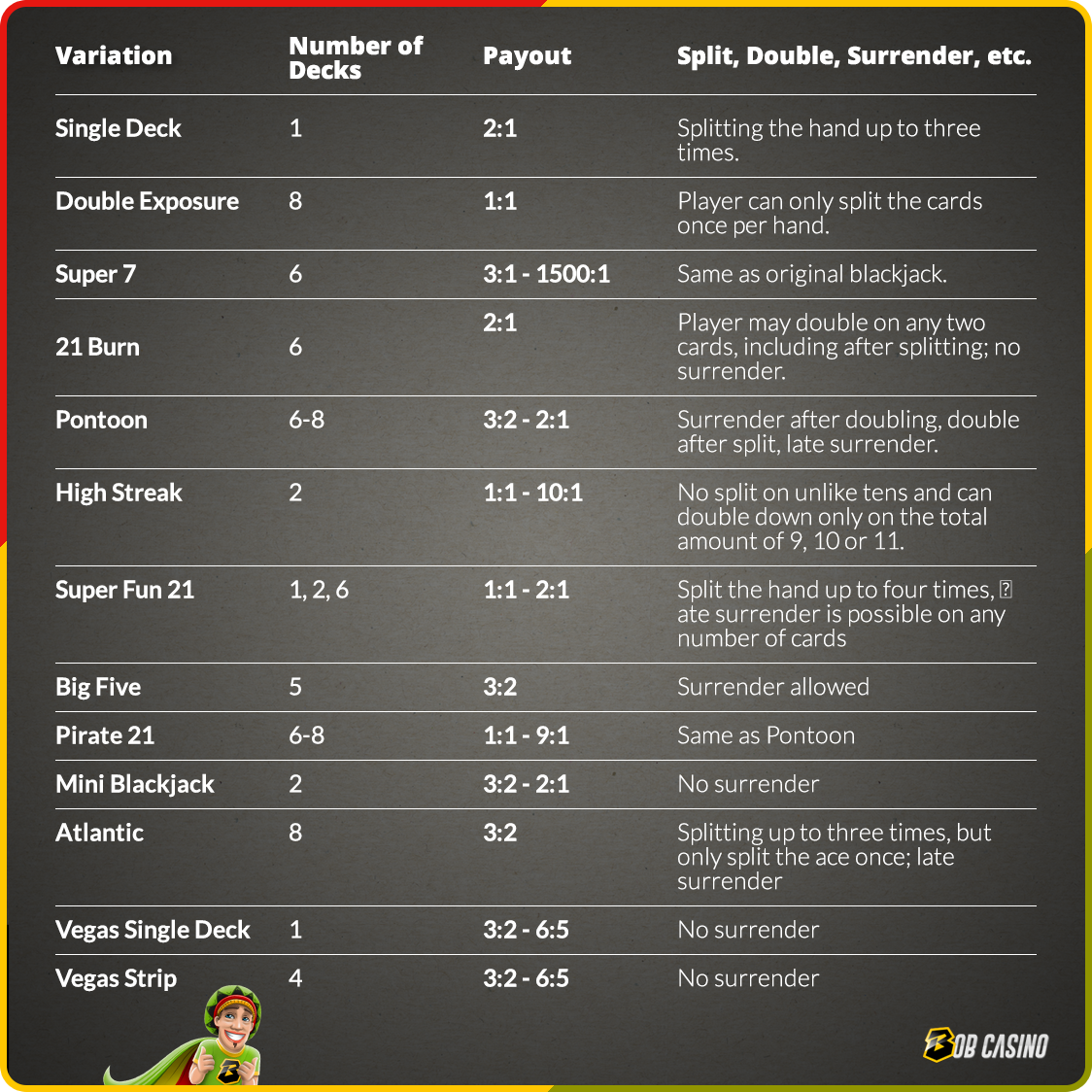
Comparison of different blackjack variations.
Other Blackjack Variations Rules
At last, but not least, there are some other Blackjack variations on Bob Casino. They all differ from the original Blackjack rules and provide a slightly varied experience.
Big Five
If you paid close attention to the previous titles, you can probably guess that five decks are used in the Big Five. This makes it the only Blackjack version with uneven deck number.
- Surrender allowed.
- Dealer can hit on soft 17.
- Dealer doesn’t peek the face-down card.
Pirate 21
Pirate 21 has the same Spanish Blackjack rules, but with a side-bet (for which the name stands). The players can bet on either of their first two cards matching the up-card of the dealer. The payout for the side bet is rather attractive:
- Matching cards are unsuited – 4:1
- Matching cards are suited – 9:1
A great addition to the main game, as the original Pontoon is fairly enjoyable as well.
Please note, however, that if both first two cards match the dealer, only the highest possible amount will be paid.
Mini Blackjack
A compact Blackjack version with an optimized interface and rapid game function to speed it up.
- Blackjack payout 3:2.
- Insurance payout 2:1.
- Dealer stands on hard 17 and hits on soft 17.
- No surrender allowed.
Atlantic Blackjack
Atlantic is based on the version played in the casinos of Atlantic City, which contrast with most West Coast casinos of the US and particularly noticeable for using 8 decks.
- Dealer stands on both hard and soft 17.
- Splitting up to three times, but only split the Ace once.
- Late surrender is allowed.
Vegas Single Deck
A sharp contrast to the previous one, Vegas Single Deck is (what a shock) a single deck one.
- Blackjack pays 3:2 – 6:5.
- Dealer hits on soft 17.
- No surrender.
Vegas Strip
Named after the gambling Mecca itself, Vegas Strip is almost the same as Vegas Single Deck, except for using 4 decks and, weirdly enough, not trying to show it off in its name.
Conclusion
There are, of course, a lot more variations of Blackjack out there. The basic Blackjack rules allow for enough flexibility to bring in some changes, but keep the game enticing and challenging, without needing to remember any complex combinations and rules like in other casino table games.
It’s worth pointing out that a lot of the rules for the above-mentioned ‘jacks can differ from casino to casino, be it online or offline. Make sure to get acquainted with the rules of a casino you are using.
Hopefully, the rules outline will give you a head-start to get you rolling on Bob Casino. Enjoy the game!

